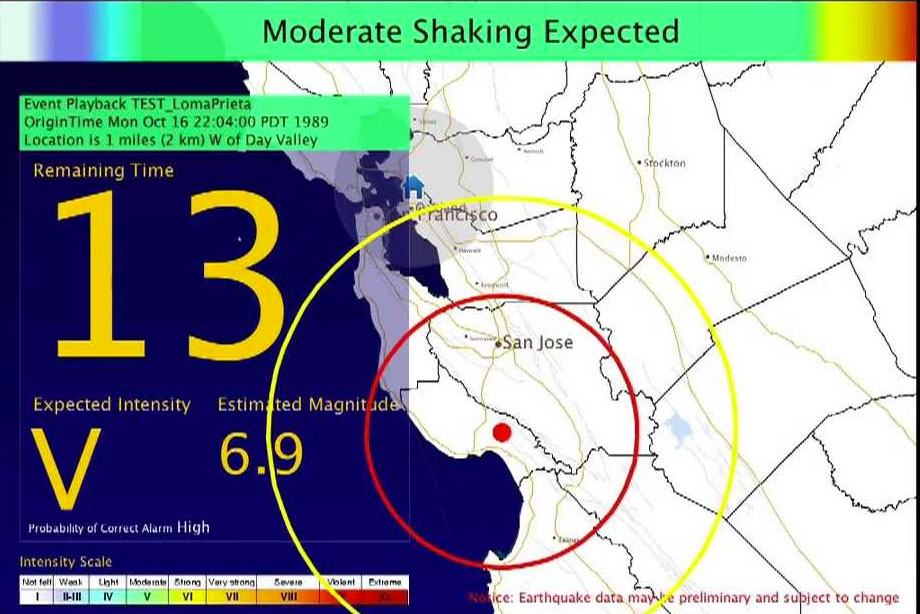West Coast rollout of updated ‘ShakeAlert’ earthquake warning system
California was the first to try ShakeAlert in 2016. Now Washington and Oregon will be able to test what will become a fully integrated West Coast early warning system.

April 11, 2017
ShakeAlert is a prototype earthquake early warning system for the West Coast. Though still undergoing testing, ShakeAlert will eventually provide warnings via cellphone that ground shaking from a nearby earthquake will soon arrive, allowing time to drop, cover and hold on, as in this video dramatization. Video by Roxanne Makasdjian and Stephen McNally.
The U.S. Geological Survey and its university, state and private partners this week announced the rollout of the latest version of the ShakeAlert earthquake early warning system, bringing it to all West Coast states.
A “production prototype” was rolled out in California in 2016. The new version 1.2 extends this to Washington and Oregon, creating a fully integrated ShakeAlert system for the West Coast that can be used for pilot studies of early warning alerts.
An earthquake early warning system can give automated systems and people precious seconds to take protective actions before the severe shaking waves from an earthquake arrive, including “drop, cover and hold on.” The system does not yet support public warnings, but the new version allows selected early adopters to develop pilot implementations that demonstrate the system’s utility and develop technologies that pave the way for broader use.
According to Richard Allen, director of the UC Berkeley Seismological Laboratory and one of the lead researchers involved in developing ShakeAlert, warnings could eventually be provided to the general public via TV, computer and PA systems, or through the most ubiquitous electronic device today, the cellphone: “a warning in your pocket,” Allen said.
The ShakeAlert system is being developed with public and private partners, which include: the U.S. Geological Survey, the California Governor’s Office of Emergency Services, the California Geological Survey, the Gordon and Betty Moore Foundation, the California Institute of Technology, the University of California, Berkeley, the University of Washington, the University of Oregon, the University of Nevada Reno and Central Washington University.